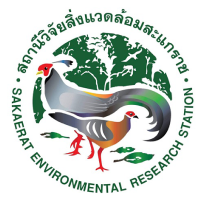Keywords :
Communities; Amphibians
บทคัดย่อ :
In adjacent areas of broadleaf evergreen forest, deciduous dipterocarp forest, and agricultural land in northeastern Thailand, >4,000 individuals of 105 species of reptiles and amphibians were systematically collected. The position of capture of each individual was recorded in terms of a complex microhabitat code. The 3 environments differ substantially in pattern of human disturbance, in vegetation structure, and in range and predictability of temperature and total evaporation, the evergreen forest having the most buffered climate near the ground. Of the 3 environments studied, the evergreen forest has the most diverse and distinct herpetofauna, and the largest percentage of autochthonous species. The evergreen forest community has more southern or tropical affinities, while the deciduous forest community has more northern affinities. Analysis of the use of microhabitat categories by coexisting species reveals significant dif- ferences, even among the most similar sets of species. Differences in species richness among the three communities are not explained by differences in microhabitat diversity, mean niche breadth, or mean niche overlap. However, an ith nearest neighbor analysis of the dispersion of niche centers in resource space reveals closer packing and larger and more distinct guilds in the evergreen forest: the environment richest in species and the most predictable in climate. Both a graphical treatment and an analysis of sets of species grouped a priori according to their general natural history confirm the existence of larger and significantly tighter guilds in the evergreen forest. It is suggested that unpredictable environments tend to prevent the formation of distinct guilds, while the greater species richness of more predictable environments may be a function of guild formation.
เอกสารอ้างอิง :
Inger, R. F., & Colwell, R. K. (1977). Organization of contiguous communities of amphibians and reptiles in Thailand. Ecological Monographs, 47(3), 229-253.



